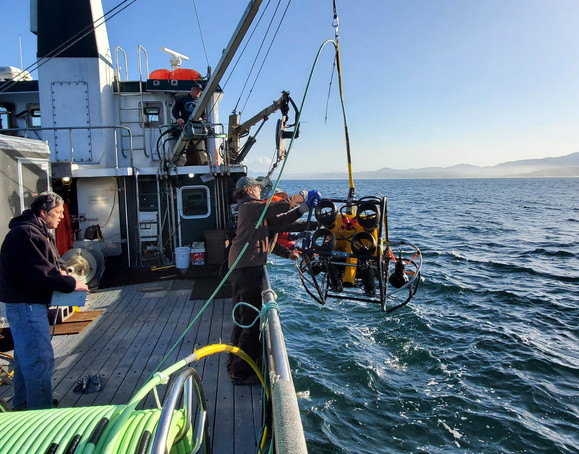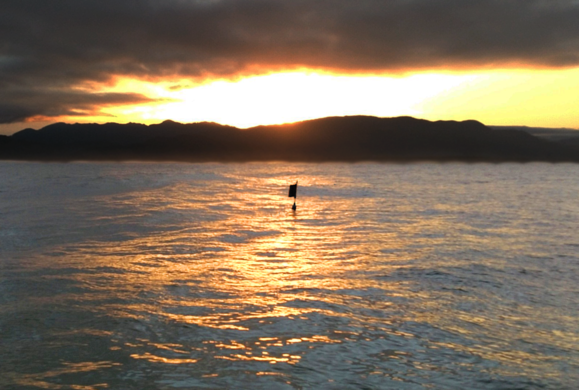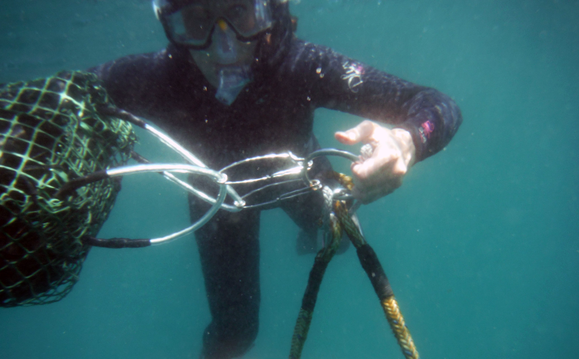Marine Reserves News: What We've Learned at Otter Rock After 10 Years
ODFW sent this bulletin at 05/26/2022 07:30 AM PDT
Photo: Snorkeler deploys a SMURF, a 'Standardized Monitoring Unit for the Recruitment of Fishes', in order to study juvenile fish in Oregon. We invite you to explore Otter Rock Marine Reserve as we share our 'One-Pager' of findings from the first 10 years of research. Otter Rock is the shallowest and smallest of Oregon's marine reserves and also serves as an important nearshore ‘Living Laboratory’- a.k.a. a perfect location for long-term ecological monitoring in both intertidal and subtidal environments. Come learn about what makes Otter Rock unique and how collaborative research partnerships have helped us understand trends in sea stars and juvenile fishes. The Otter Rock Marine Reserve One-Pager is the second of a series, highlighting findings from our ecological monitoring efforts for each individual marine reserve, based on our recent Marine Reserves Program Synthesis Report. The synthesis report was released back in February and is currently available for the public to download. Our One-Pager snapshot summaries focus on the most salient findings from our research activities at each marine reserve. In the coming months we will be publishing additional One-Pagers for each of Oregon’s three remaining reserve sites.  Remotely Operated Vehicles: A Tool to Study Deep Water Reefs Photo: ODFW carefully launches a Remotely Operated Vehicle from the starboard side of F/V Timmy Boy. Much of the Oregon Marine Reserves system resides in water deeper than what can be safely surveyed by SCUBA (60ft). Instead, ODFW makes use of other tools including remotely operated vehicles (ROV) to conduct surveys in these deeper rocky reef habitats. Controlled from the surface by a long tether (also called ‘umbilical’), ROVs operate like a small submarine, carefully maneuvering above the seafloor to collect valuable data on habitats as well as fish and invertebrate species. ODFW’s ROV, affectionately nicknamed ‘the sea cow’, is equipped with a high-definition video camera and can also be mounted with a stereo-pair of cameras – allowing for the precise size measurements for observed organisms. All video collected will be analyzed back on shore to provide information about densities of key species along Oregon's coast. ODFW will be conducting ROV surveys this spring and fall at the Cascade Head Marine Reserve. Reports from the Field - May 2022 Photo: Oceanographic mooring at sunrise at the Cape Meares Comparison Area; a similar mooring is deployed at the Cape Falcon Marine Reserve. This month staff and equipment splashed onto the water with the kick-off of field season.
Explore More Marine Reserves News
|

OREGONMARINERESERVES.COM
Oregon Department of Fish and Wildlife2040 SE Marine Science Dr. Newport, OR 97365 (541) 867-4741
|


